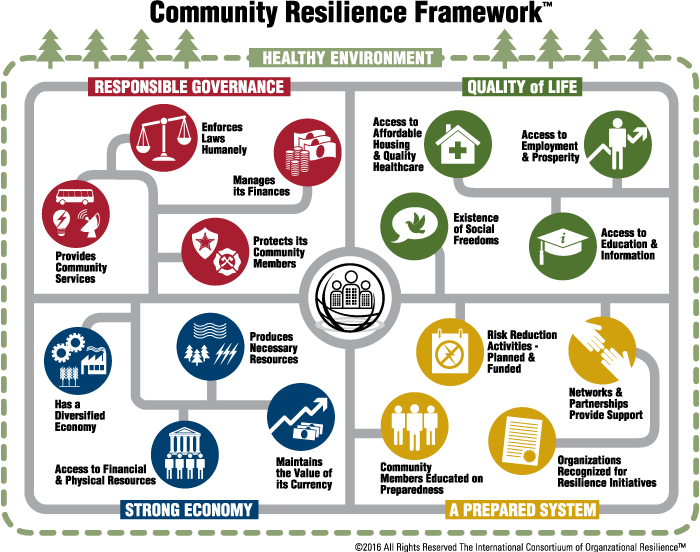81 more things emergency managers should know
The debate about professionalisation of emergency management continues , including this through-provoking blog by Jeff Donaldson.
I recently described emergency management as a ‘proto-profession’; it entertains ambitions of professionalisation and expends (a lot) of energy in the development of professional standards and there are bodies which govern entry to the club. However, a significant proportion of the debate feel that without an agreed corpus of knowledge it can’t truly be a profession and that there should be greater role for the bodies in determining entry (whilst not wanting to risk being excluded themselves).

The argument typically follows that medicine and law have self-regulated education, training, and standards, underpinned by collective knowledge and ethical principles. My perspective is that there whilst there needs to be agreement on some core knowledge, both medicine and law which are held as shining beacons are professions which seek to change and learn. Their knowledge isn’t fixed and has evolved considerably over time (I’m looking at you trepanning the skull!).
In my view it’s better to do something and make some progress than it is to debate over the finer detail at the detriment to the field and it’s people. We are entering a new dawn for emergency management and should be approaching it head-on.
So what is the body of knowledge for emergency management?
Several years ago (in a rage-fuelled post) I attempted to set out my thoughts on what I would include.
The original list of 81 things and emergency manager should know was all mine. I knew then that it was incomplete. The beauty of emergency management is that everybody brings something to the table (as I said similarly in this recent post for National Careers Week).
Therefore I’ve revisited and supplemented the original list with the wonderful and brilliant suggestions of friends and colleagues, some of whom I know well, and others I’ve yet to met but who felt compelled enough to add their thoughts to the list as it has been shared online.
- The key languages spoken in your relevant communities (and ideally a greeting and thank you in each).
- How to use Resilience Direct/other platforms to share documents and maps.
- How to provide and take information in a clear structure way (eg. METHANE or IMARCH).
- How to say no politely (at first) to things that aren’t your remit.
- A sense of humour.
- The best snacks to keep you going at 2am.
- How to ‘lower your hand’ on teams/zoom etc (see also: how to use mute/unmute).
- The key roles and ranks indicated in emergency service and military uniforms (tabards, rank markings, what that gold string means etc).
- Key acronyms, when to use them and when to avoid them.
- That senior management likely won’t be interested until the wheels are starting to fall off.
- How to think outside the box and capture the rationale for doing so.
- Who you can call when you don’t know who else to call. And what number to call them on.
- Know your local significant infrastructure and the risks presented by its failure.
- Limits of any delegated decision authority.
- Understand the direction of the wind (both literally and figuratively).
- Water (and blame) flows downhill.
- The sticky bun that nobody else has eaten will come back to haunt you 2 hours later.
- You are not an island.
- Requirements of the COMAH and Pipeline Safety Regulations.
- Turner’s Disaster Incubation Theory.
- Who the FEMA Administrator is.
- How to make use of ‘screenshot’ to share information without having to wait for it to be circulated by the originator (and when not to do this too).
- How to turn a document in to a PDF, and how to reverse it if needed.
- ‘You can’t fix stupid’.
- Something (anything!) about bioterrorism.
- The importance of infant feeding in emergencies.
- The difference between personal safety and process safety.
- The most dangerous place is between the fire service and the catering van.
- A brief history of civil protection and the formative events in it’s evolution.
- How to recognise signs of trauma (and vicarious trauma) in yourself and others.
- At least 4 different routes to your place of work, using different means of transport.
- That COBR doesn’t have an A.
- Key response operation names and what they mean.
- 1917-1920 flu epidemic.
- Basics of crowd psychology.
- A rough idea of what different 999 service specialists/vehicles do.
- A rough idea of what happens behind the scenes when you call 999.
- Where to find the keys.
- Read old Inquiry/Inquest/prevention of future death reports like they’re your favourite genre.
- How to spot and counter a microaggression.
- Respect the news images, they have different access to information to you.
- The importance of searching out lived experiences.
- Vital importance of effective communication.
- Something about structural stability and the technical terms for standard building components.
- Something about asbestos.
- Know what you don’t know.
- Know that there is no accounting for politicians.
- Remember that saying it once is usually not enough, repeating it frequently helps.
- Know the history of your profession in your country (and elsewhere).
- Find ways to cope (or thrive) in the messiness of trans-disciplinary working.
- Take time to reflect, and understand your own ethics and the ethics of the organisation(s) you work with.
- How to be open to challenge and constructive criticism.
- How to defend yourself against criticism which is just mean.
- Decision makers won’t always follow your advice – figure out how you deal with that.
- There is always something you won’t know so you should always be looking to learn.
- What spolia is.
- A bit about the insurance industry.
- How to forward your phone.
- How to block your number from coming up if you have a suspicion somebody is screening your calls.
- A little about the ‘chain of custody’ and steps to preserve evidence if required.
- How to communicate when normal methods fail.
- Grounding techniques that work for you.
- Tips to keep your typing speed at a minimum of 60 words per minute.
- An understanding of the difference between prudent business continuity and panic buying.
- The maturity of language to talk about crowd incidents whilst being aware of the myth of panic.
- What the Sphere standards are.
- Signs of organisational trauma.
- Lencioni’s 5 disfunctions of a team.
- The difference between important and urgent.
- A little about disaster capitalism.
- There isn’t always a single right answer, but there can be many wrong answers.
- Why it’s important to read the detail of the forecast, not just reach to the ‘colour’ of the warning.
- The difference between a lesson identified and a lesson learnt.
- How to describe what your job is succinctly at social engagements.
- What happened in the Carrington Event and why it’d be different now.
- How El Nino and La Nina have global effects.
- The pros and cons of lean processes and efficiency.
- Know when a situation needs simplicity and when it needs detail.
- Enough about your stakeholders to be able to manage the politics of seating plans
- How to connect the projector/printer/label making machine to your computer.
- Parkinson’s Law of public administration.
I expect this list could continue to grow, and will be refined as people make a case for what is in/out of the corpus. I wholeheartedly encourage that – help us define what an emergency manager needs to know.


 Sure, unlike ‘doctor’ or ‘engineer’ the title Emergency Manager is less well-defined. But a profession, to me, is the application of specialist knowledge and skills in the interest of others. I see colleagues around me doing that every day. A profession should not be reduced to being identifiable in clip art.
To suggest we are not a profession implies we are unprofessional. That makes me angry because I work with unquestionably professional people. Our days are spent building relationships, translating between professional backgrounds, navigating organisational cultures, and referencing broad bodies of research and learning.
We are ‘specialist generalists’.
Inspired by a list of
Sure, unlike ‘doctor’ or ‘engineer’ the title Emergency Manager is less well-defined. But a profession, to me, is the application of specialist knowledge and skills in the interest of others. I see colleagues around me doing that every day. A profession should not be reduced to being identifiable in clip art.
To suggest we are not a profession implies we are unprofessional. That makes me angry because I work with unquestionably professional people. Our days are spent building relationships, translating between professional backgrounds, navigating organisational cultures, and referencing broad bodies of research and learning.
We are ‘specialist generalists’.
Inspired by a list of 




